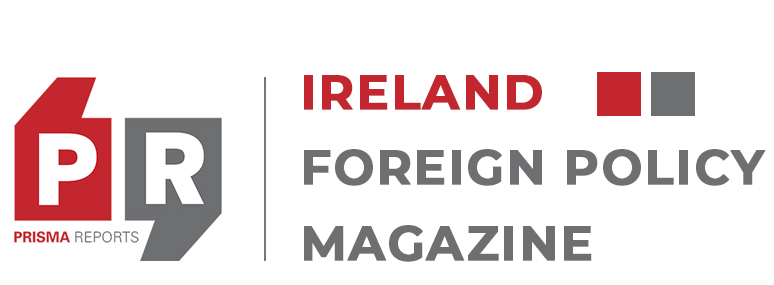Although the Covid-19 pandemic has starved every economy in Europe and beyond, Ireland has somehow avoided 2020’s economic tyranny. The island nation is on its way to becoming one of the fastest-growing economies in the world, with projected GDP growth rates just above 3% in 2020 – the only country with positive growth rates in the EU. One of the main reasons for Ireland’s financial success is its foreign investment economy.
In the last ten years, the country has attracted huge American tech and pharma corporations, such as Apple, Microsoft and Johnson & Johnson, all looking to take advantage of the country’s lowered corporate tax rates and highly educated English-speaking population. Another reason for growth is Dublin’s financial services sector that houses more than 430 finance companies and provides around €2.3 billion to the country in annual taxes. Other advanced nations are now looking at Ireland as a model for growth.
Ireland-US Partnership
While the Emerald Isle may have been named so for its lush green wilderness, it may now take its name from the amount of US greenbacks crossing its shores. US-Irish relations are at an all-time high after continued growth in the last two decades. Ireland is now America’s ninth largest trading partner – no small feat for a nation the size of Indiana. American companies account for 20% of employment in Ireland, with collective US investments of $444 billion. Vice versa, Ireland’s industrial presence in the US has grown considerably, with more than 1,000 Irish companies operating in various locations around the states. Ireland’s current FDI into the US now sits at $236 billion. With the most Irish US president since John F. Kennedy stepping up to the plate, firm relations between the two nations are expected to continue.
Green Economy
Nations around the world are committing to lowering carbon emissions as the threat of global warming rises – and Ireland is deep in the game. The threat for the island nation is real, with the latest studies showing an increase in heatwaves, heavy precipitation, droughts and decreased frost in the country by 2050 that will invariably affect Ireland’s integral agriculture sector. In October 2020, the government pushed through a new green bill and committed the country to zero carbon emissions by 2050 through an average reduction of 7% per year. To reach its goals, massive investments have been made to promote green energy and convert the nation’s industrial sectors to use cleaner and more sustainable technologies. While green may be the nation’s national colour, it is now the nation’s mandate.


Life sciences
Ireland’s low tax environment, young and educated population and geography have rapidly breathed life into a world-class life sciences sector. Ireland is now the third largest exporter of pharmaceuticals in the world, with €80 billion exported per year! Collaborative clusters in pharmaceuticals, biotech, medical devices and diagnostics currently employ more than 50,000 people directly and account for 32% of Ireland’s GDP. The sector’s growth has largely to do with government funding of education and research institutions, such as The National Institute for Bioprocessing Research and Training, a massive biotech training facility built with investments of €57 million. The sector highlights Ireland’s commitment to invest in its future.
Tech and Innovation
The Emerald Isle has seen massive growth in the last few decades, throwing out the stereotype of potato farming and replacing it with a nation known for innovation and advances in information and communications technology (ICT). In fact, Ireland is now the second largest exporter of computer and IT sciences, with global tech leaders such as IBM, Microsoft, Apple, Google and Facebook all setting up shop in the country. Due to the pandemic and the need for more digital solutions, Ireland’s ICT sector experienced a 16% rise in gross value added between Q1 2020 and Q3 2020 – and that growth is not expected to slow down. The digital revolution is here, and Ireland is at the forefront.


Agri-food
Further Education
Ireland’s education sector has gone from big to booming over the last decade. Currently, the nation has the highest amount of university level graduates in the EU, with the number of students that reach first-class honours at record levels. In particular, Ireland’s tech education is seen as top brass. This is due to ongoing investments from public entities to support the education of potential workers in Ireland’s thriving tech industry, including a recent €9 million funding for technological universities and institutes in 2021. The pandemic put a huge strain on academic institutions the world over and saw a near collapse in students studying abroad. Traditionally Ireland attracts around 44,000 exchange students that amount to a gross income of €2.5 billion but fell far short this year. However, the country’s reputation as an advanced English-speaking education hub and Brexit’s role in hampering EU students from entering the UK are expected to reverse the trend next academic year and have faces from all over the world throwing up their graduation caps on Irish soil.


